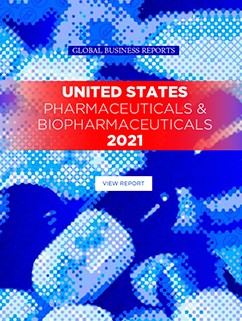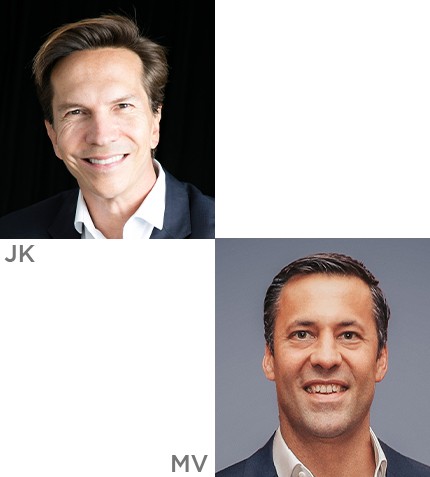
"The new LGM Pharma offers end-to-end services and unique partnerships so clients do not have to worry about supply chain, regulatory, and manufacturing scale up."
RELATED PUBLICATION
Prasad Raje
CEO, LGM PHARMA
Can you provide an overview of LGM’s business model and how the acquisition of Nexgen will boost the companies’ offering to clients?
LGM started as an API supply chain management company, sourcing active ingredients for global pharmaceutical clients of all sizes in a variety of end markets – Compounding Pharmacy, ANDA and NDAs, OTCs, 505(b)(2), and niche vitamins. Over the years we developed a pre-qualified network of trusted API manufacturers to serve our API sourcing clients. Because we service clients across therapeutic areas and regulatory pathways, and they often sought guidance for formulation development and drug product manufacturing, it was a natural fit for LGM to acquire CDMO capabilities. Our thinking was, since customers trusted us with one aspect of their business, it’s a value-add to bring in development and manufacturing services – keeping it under one roof. The acquisition of Nexgen brought to our customers a breadth of dosage forms – solids, non-sterile liquids, semi-solids, and suppositories – and integrated R&D and regulatory expertise, plus analytical testing services. The new LGM Pharma offers end-to-end services and unique partnerships so clients do not have to worry about supply chain, regulatory, and manufacturing scale up. Our commitment to smart partnerships also extends to co-development opportunities with clients, beyond traditional fee-for-service CDMO, to allow for profit sharing/licensing/royalty interest arrangements.
What are the key competitive advantages LGM has over larger CDMOs?
One of the observations our small biotech customers communicated to us is that when CDMOs become too large, personal attention gets sacrificed, especially for smaller companies. We see this as an opportunity, because if you look at the drugs that have been developed over the last 5-7 years, most (70-80%) of these drugs were developed and originated at small biotech companies.
LGM is designed to cater to this market. Rather than rely on the jargon of one-stop-shopping, our goal is superb personal service, where our customers experience our expertise, partnership, reliability and commitment in every service area we offer.
What is the Significance of the 505(b)(2) pathway and the role LGM plays in supporting drug development programs in this area?
The 505(b)(2) pathway came into effect in 1998 to expedite the regulatory process for certain drug products. The pathway can alleviate the typical 12 years and US$1.5 billion invested to clear an innovator drug, making it good for the industry and for patients. Over the last 5-7 years it has become a great vehicle to meet patients' unmet needs while spurring a lot of innovation in drug delivery systems and alternate dosage forms.
Because many of the 505(b)(2) projects use existing APIs, our supply chain expertise is a key differentiator. The vast majority of clients do not have the expertise or network to source from the right manufacturer to support the API through the entire drug development program. Logistical issues like cGMP chain of custody awareness, and regulatory concerns are also our expertise. We have invested in the right people, skills, and expertise to understand the 505(b)(2) pathway and when to leverage it.
How did the US pharma industry become so dependent on China and what efforts are being undertaken to create less dependency and diminish supply chain threats?
There are multiple things that happened in the manufacturing area for both drug substance and drug products. First, big pharma has, for multiple decades now, reduced their manufacturing assets, and those assets have been converted to large manufacturing CDMOs. Second, over the last decade as private equity was taking more interest in the pharma industry, it consolidated many of the smaller facilities. Third, from a market size perspective, the number of drugs that have been approved has steadily increased. The combined effect has been US pharma industry’s interest in, and catering to, new molecular entities (NMEs), while generics manufacturing, and the raw materials for generics and NMEs, was moved offshore to India, China, and other lower-manufacturing-cost countries.
A manufacturing infrastructure, expertise, and heavy headcount has been assembled over decades in lower-cost countries, and it will take a sustained and concerted effort to reshore some manufacturing and reduce dependency.
The catch-22, however, is that can lead to higher costs at a time when the number of prescriptions is still weighted to generics to keep costs low. Therefore, a reshoring effort must be subsidized in some way. The effort has to go beyond just investing in the infrastructure; the business model also has to work. Unfortunately, the moment you subsidize, you risk reversing the last decade of fighting for equality in the global market from a patent exclusivity perspective. This could negatively impact NMEs – because foreign governments can start subsidizing NMEs and creating a pharma industry backlash. If we could come up with a list of critical medicines and only subsidize those, that could be a pathway for a sustained domestic infrastructure.











